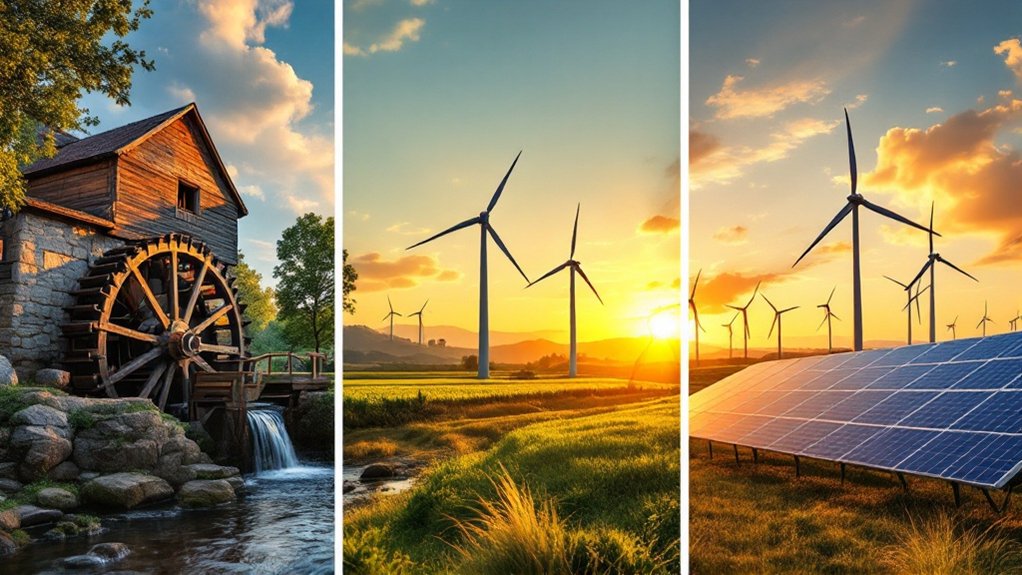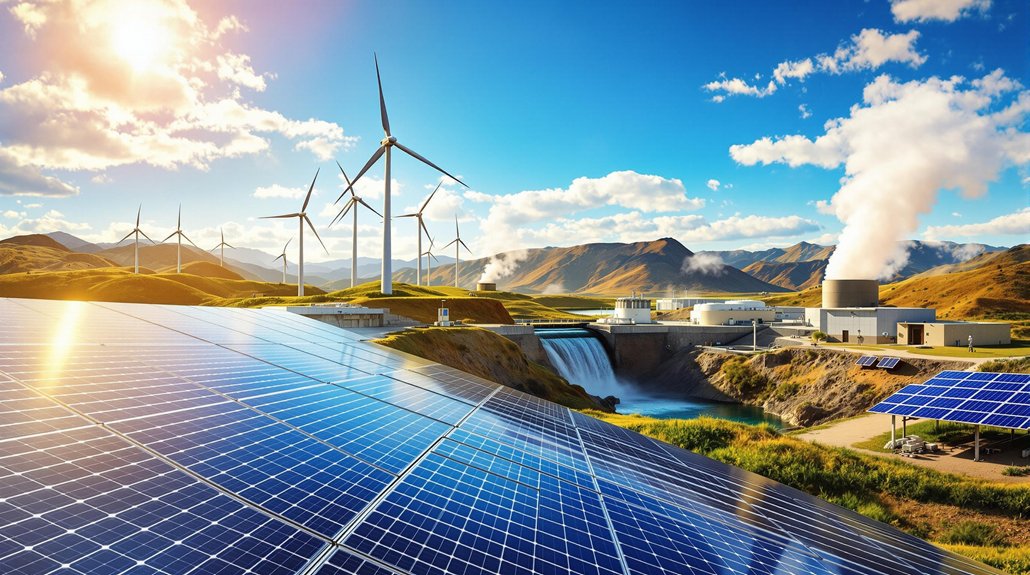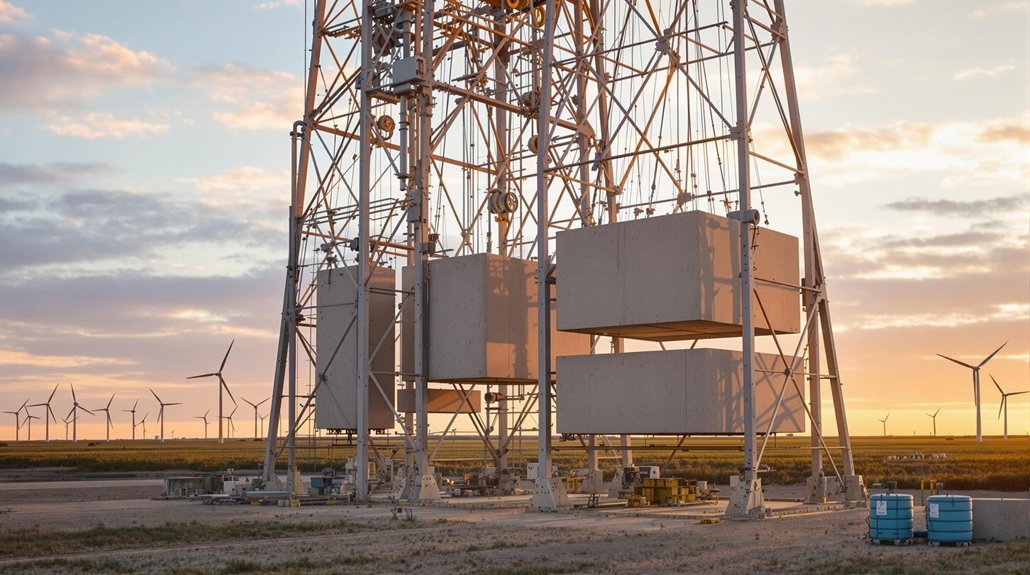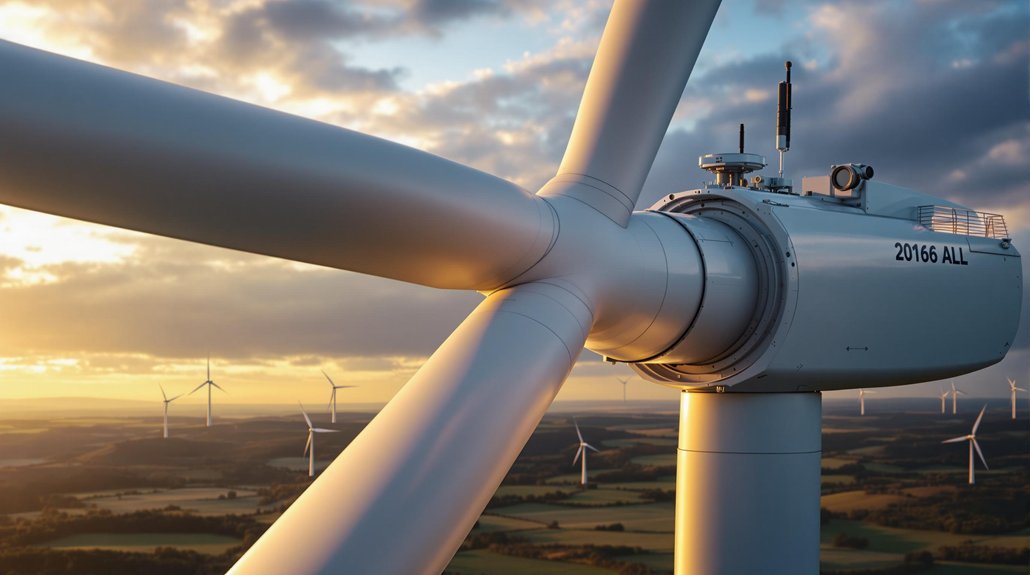Renewable energy has evolved dramatically over thousands of years. Ancient civilizations used waterwheels and windmills for practical tasks. During the Industrial Revolution, fossil fuels took center stage, pushing renewables aside. The 1970s energy crisis renewed interest in alternative power sources. Today, solar panels, wind turbines, and geothermal plants provide about one-third of global electricity. With record investments reaching $755 billion in 2021, the clean energy transformation continues to accelerate.

Though renewable energy sources are often seen as modern innovations, humans have been harnessing natural power for thousands of years. Ancient civilizations used wind and water power for practical purposes. Waterwheels appeared in Europe over 2000 years ago, while windmills ground grain in the Middle East by 200 BCE. People even used solar energy to light fires as early as 700 BCE, and natural hot springs provided geothermal energy for bathing.
Renewable energy isn’t new—ancient societies harnessed wind, water, and solar power centuries before modern technology emerged.
The Industrial Revolution changed our energy landscape profoundly. Coal became the dominant energy source in the 1800s, powering factories and transportation. The first commercial oil well was built in Pennsylvania in 1859, and as internal combustion engines spread, oil demand increased. During this period, interest in renewable energy declined as fossil fuels drove rapid technological growth.
The early 20th century saw important renewable energy developments despite fossil fuel dominance. Bell Labs created the first modern solar cell in 1954. Wind turbines generated electricity as early as 1887, with commercial models sold by 1927. Einstein’s groundbreaking paper on the photoelectric effect in 1905 laid the theoretical foundation for future solar technology. Italy opened a geothermal power plant in 1904, and hydroelectric power expanded considerably in the early 1900s. The fundamental technologies developed during this era would later become essential for the energy transition needed to meet climate targets like the Paris Agreement.
The 1970s energy crisis sparked renewed interest in alternatives to oil. Government funding for renewable energy research expanded, accelerating development in solar, wind, and geothermal technologies. This momentum continued into the late 20th century with projects like the Solar Two plant in 1996 and the growth of wind farms. The first solar-powered village was established in Arizona in 1978. The crisis proved crucial for diversifying energy sources, prompting the initial commercial development of solar panels for electricity generation.
In the 21st century, renewable energy has grown at an unprecedented pace. Solar and wind capacity has expanded globally, with renewables increasing their share of the global energy mix by 3.5% between 2010 and 2020. A record $755 billion was invested in energy transformation in 2021.
Today, renewable sources account for about one-third of global electricity production, with solar and wind growing fastest. Research continues in energy storage and grid integration as the world moves toward decarbonization goals.
Frequently Asked Questions
How Do Renewable Energy Costs Compare to Fossil Fuels Today?
Renewable energy costs have dropped dramatically in recent years.
Today, solar and wind power are cheaper than fossil fuels in most global markets. Solar costs 82% less than in 2010, while wind energy ranges from $0.03-$0.099 per kWh.
In contrast, fossil fuel electricity costs $0.05-$0.18 per kWh.
In 2021, 163 GW of new renewable capacity was cheaper to build than coal in G20 countries.
What Countries Lead Global Renewable Energy Adoption?
China leads global renewable energy adoption as the world’s largest producer, generating over 3,000 TWh in 2023.
The United States holds second place with 388 GW capacity.
The European Union shows strong country-level leadership, with Denmark producing 87.2% of its electricity from renewables.
Emerging leaders include Brazil (third in global capacity), India, Costa Rica, Morocco, and Uruguay, which has achieved nearly 100% renewable electricity.
Can Renewable Energy Completely Replace Fossil Fuels?
Renewable energy can fully replace fossil fuels, but significant challenges remain.
Experts believe a complete shift is possible within 30 years with international cooperation.
Current technology limitations include intermittency issues with solar and wind, requiring better storage solutions.
Some sectors like aviation and heavy industry are difficult to electrify.
The shift would need a 6-8x increase in renewable energy production by 2050.
How Do Renewable Energy Technologies Affect Local Ecosystems?
Renewable energy technologies impact local ecosystems in various ways.
Solar farms can cause habitat loss and bird deaths from panel collisions.
Wind turbines may kill birds and bats while creating noise pollution.
Hydropower disrupts fish migration and alters river flows.
Geothermal energy can release toxic substances and cause land subsidence.
Each technology presents unique environmental challenges that scientists and engineers are working to minimize.
What Careers Are Emerging in the Renewable Energy Sector?
Several careers are emerging in the renewable energy sector.
Wind turbine technicians will see 44% job growth by 2031, while solar installers will grow by 27%.
New technical roles include energy storage specialists and data analysts.
Management positions like project managers and sustainability consultants are also expanding.
Specialized jobs in geothermal, bioenergy, hydropower, and ocean energy technologies offer additional opportunities in this rapidly growing field.









